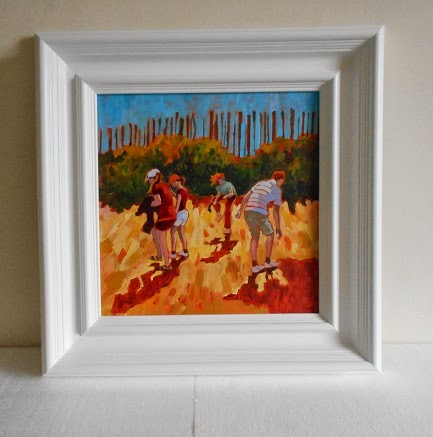 |
| Mary Kemp- Cyclamen. Ink on Lana Vanguard |
It stands next to a cobalt blue painting and every time my eyes rest upon it my heart zings. The colour combination is just made in heaven.
I've been meaning to paint it for a while now.
This morning I put aside the oil I was working on and got out some smooth and shiny Lana Vanguard paper, Rowney Daler acrylic ink and a pot of Sennelier crimson ink which has a very high shellac content.
I drew a rough outline with a little gel pen.
After about an hours work this is what I came up with.
I've used inks on this paper before and love the way the ink pools unpredictably and moves about on the surface.
But then as I was getting another sheet of paper out to have another go I read the blurb on the pad that said it was:
SUITABLE FOR OILS !!!!!!!
So out came the oil paints. Time to experiment.
 |
| Mary Kemp. Cyclamen. Oil paints on Lana Vanguard paper. |
Would I use it again?
I'm not sure. I did like the blurry effect with the cloth. It reminded me a bit of encaustic painting.














